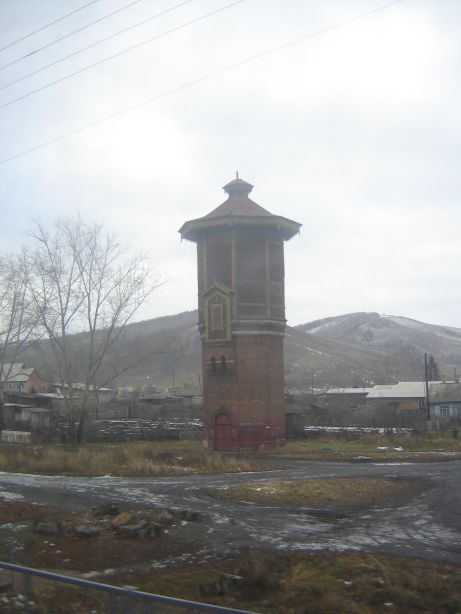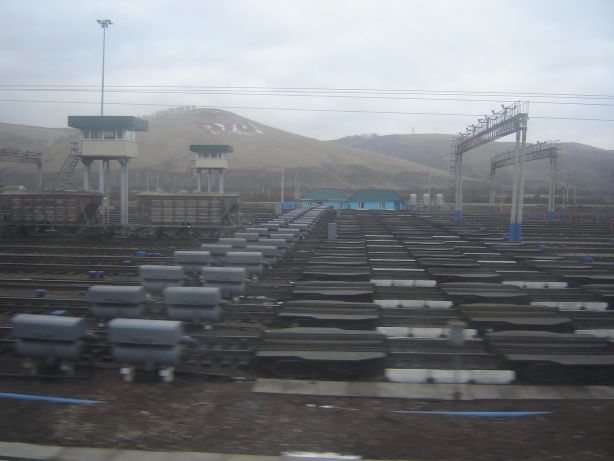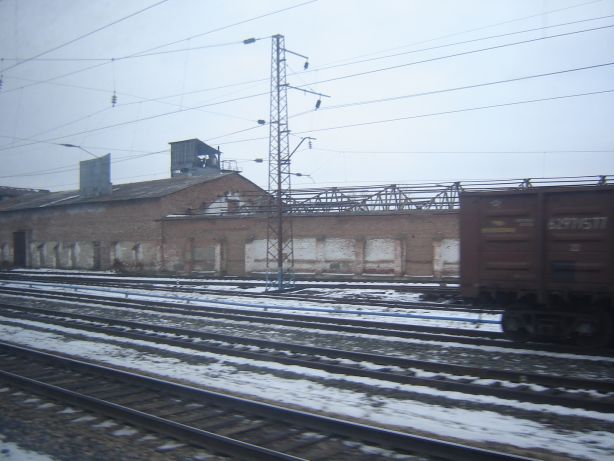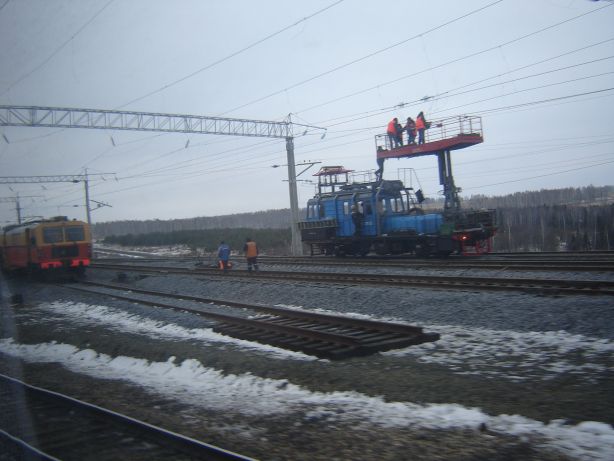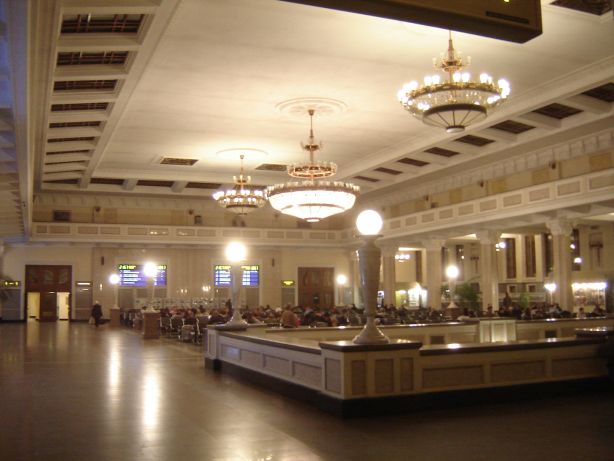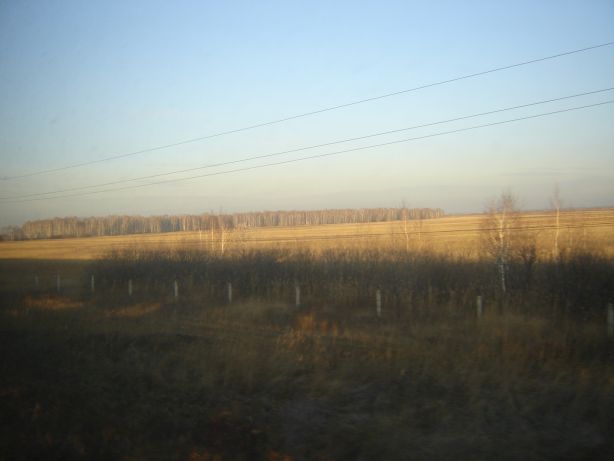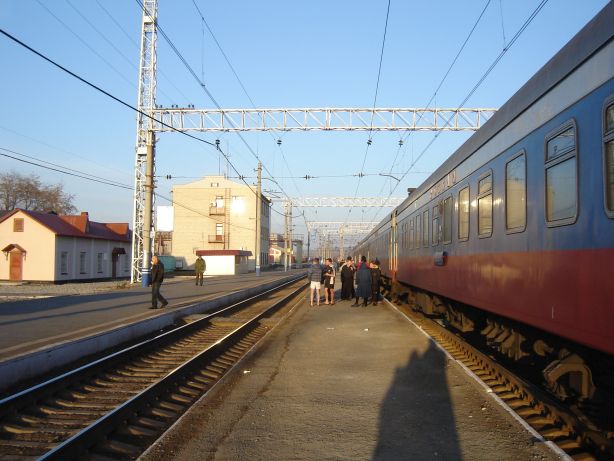
Across the West Siberian Plain
Irkutsk to Ishim
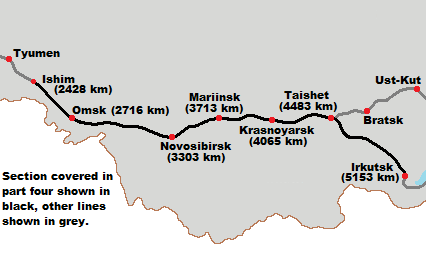
This covers the section from Irkutsk (5153 km) to Ishim (2428 km). It took approximately one day, eighteen hours and covered 2,825 kilometres, Four principal Stations are along this section of the Trans Siberian Railway are Taishet (4483 km), Krasnoyarsk (4065 km), Novosibersk (3303 km) and Omsk (2716 km). As we had left Irkutsk in the evening this section occupied two nights and one day.
Departing Irkutsk the railway heads north west following the Angara River, and on leaving the outskirts of the town we plunged into the Taiga. However we had left the rugged wilderness of eastern Siberia so there were small towns at intervals, and as night fell we could see occasional patches of light. By now the train crew, particularly the onboard engineer had realised that we were interested in train operations so whenever we stopped to change locos he would bang on our cabin door to let us know. Sometimes we just looked out but other times we got up and walked down to the head end to watch the change, thus we saw Taishet, an important railway junction with the Baikal – Amur mainline, in the small hours of the morning. We were now over halfway to Moscow and with the return to more densely populated regions the dining car was fully stocked, but while breakfast was ample the menu choice remained limited.
We passed a large yard with probably the most elegant water tower that we had seen so far, we assumed that this was probably a precursor to arriving in a city. The crossing of the Yenisky River on a one kilometer long bridge indeed heralded the approach to Krasnoyarsk. The station was very elegant and had medium level platforms so to the amusement of the local people I engaged in a spot of window cleaning using an old railway trick of damp newspaper, and soap. The result, while not perfect (as I could only reach halfway up the window), was far better than the accumulated dirt and grime that 5,000 kilometres had deposited. On the platform was a large 2-10-0 locomotive number SO17-1600 commemorating the first locomotive built at Krasnoyarsk in 1943. However this is a deception as the locomotive is actually SO17-1013 and it is believed to have been built in Khar’kov (present day Kharkiv) Ukraine in 1938.
Leaving Krasnoyarsk after the habitual loco change, it was clear that this is an industrial city, with extensive railway yards and many factories. Once clear of the city environs we entered Taiga again but rather than the seemingly endless miles of woodland that we had seen earlier, the settlements were now more frequent. Several things along this section were noticeable. Many buildings were made of wood (living in Canada I can understand why) but many were unpainted wood while those that were painted were predominately blue and white. Each settlement now had cleared areas around them giving a much more open appearance to the country. There were also pockets of derelict factories that seemed to be just left to slowly rot away, quite why was not apparent. The railway was busy and we passed several capacity improvement schemes with yards being extended or additional tracks added. I would add that in some places the electrification poles, which were always concrete, had significant “leans” indicating inadequate foundations, and / or very poor ground conditions. There were extensive marshy areas from time to time which would also potentially indicate boggy ground.
Mariinsk (3713 km) saw another locomotive change and was another busy railway location, with freight trains seemingly everywhere. This is a busy station and but we noted that no-one wanted to use the passenger over bridge, instead preferring to cross the tracks despite moving trains.
One strange thing happened on this section, there was a knock at the compartment door and a young man speaking perfect English wished us good day and asked where we were from. Being in Russia I was a little concerned that this was going to be a problem but I decided to be polite and told him Canada. He said he had always wanted to visit Canada as he had heard it was a wonderful country but then came a surprise, he said he was a military pilot and pulled out a computer, proceeding to show me pictures of aircraft, his air base as well as some of the training facilities. Now I was worried, was I being set up to be declared a spy with knowledge of state secrets? No, in fact he was being a typical Russian, friendly and helpful, also proud of his country and its achievements. He was being transferred to a new base and was using the train to get to his new posting. I asked him how he knew we were on the train and he said he had seen us walking by at several stations so he knew we were on board, simple really. After some more chatting lunch was delivered to the compartment so he departed, I didn’t see him again.
Unfortunately we arrived at Novosibersk in the evening so the railway museum was not open. We therefore had to be content with walking around Siberia’s biggest railway station, easily the grandest station I have ever visited.
During the night we stopped at Omsk (2716 km), another large railway junction, where the locomotive was changed again. It was clear that despite the locomotives being common types used across the whole system and as electrics do not need fuelling or significant servicing for long periods, they were being treated the same way as steam locomotives, which need to have fires cleaned and maintenance actions at 400 to 500 km intervals.
Until 1930 the Trans-Siberian ran west from Omsk into neighboring Kazakhstan, reaching Moscow via Chelyabinsk, Ufa, and Samara. These days the train heads northwest towards Tyumen and Yekaterinburg, to reach Moscow.
Next morning we awoke to better weather and more open country, arriving at Ishim (2428 km) in time for breakfast. While it seemed to be a small station is also seemed to be an important junction with connecting trains arriving during our stop.
